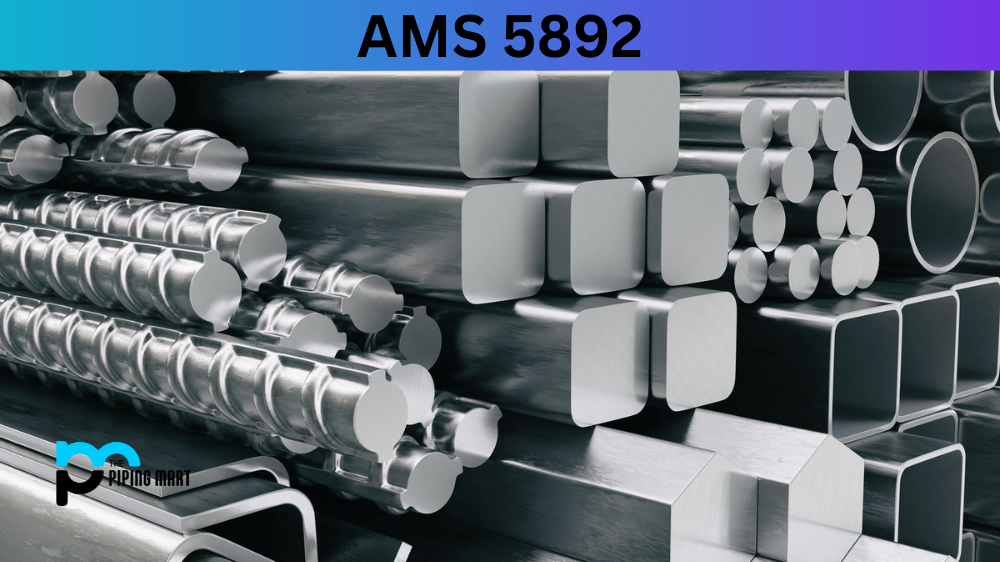Aluminum 2004 is an alloy with various uses, from automotive parts to aerospace components. It’s important to understand the different properties and composition of this alloy to assess its potential applications. In this blog post, we will discuss the chemical, mechanical, physical and heat properties of Aluminum 2004 and its corrosion resistance, heat treatment requirements and machining capabilities.
Chemical Properties
AL 2004 is made up primarily of aluminium (91% minimum), with copper being the main alloying element (3-5%). Other elements present in lesser amounts are iron (0.7%), silicon (0.4%), zinc (0.25%), manganese (0.2%) and magnesium (0.15%). This combination gives it excellent strength without sacrificing ductility or toughness.
| Component Elements Properties | Metric | English | Comments |
|---|---|---|---|
| Aluminum, Al | 91.7 – 94.2 % | 91.7 – 94.2 % | As remainder |
| Copper, Cu | 5.5 – 6.5 % | 5.5 – 6.5 % | |
| Iron, Fe | <= 0.20 % | <= 0.20 % | |
| Magnesium, Mg | <= 0.50 % | <= 0.50 % | |
| Manganese, Mn | <= 0.10 % | <= 0.10 % | |
| Other, each | <= 0.05 % | <= 0.05 % | |
| Other, total | <= 0.15 % | <= 0.15 % | |
| Silicon, Si | <= 0.20 % | <= 0.20 % | |
| Titanium, Ti | <= 0.05 % | <= 0.05 % | |
| Zinc, Zn | <= 0.10 % | <= 0.10 % | |
| Zirconium, Zr | 0.30 – 0.50 % | 0.30 – 0.50 % |
Mechanical Properties
Due to its unique composition, Alloy 2004 has a high tensile strength of at least 270 MPa (39 ksi) and good elongation values of around 10%. Its strength makes it suitable for a variety of structural applications where high levels of durability are required, such as in aircraft fuselage components and automotive body panels.
Physical Properties
Grade 2004 has excellent physical properties such as low density, good electrical and thermal conductivity, and high reflectivity when polished or given a matt finish. These characteristics make it ideal for applications that require these qualities, such as electrical wiring and lighting fixtures.
| Physical Properties | Metric | English | Comments |
|---|---|---|---|
| Density | 2.82 g/cc | 0.102 lb/in³ | AA; Typical |
Heat Treatment
Aluminum 2004 can be heat treated to improve further its mechanical properties, such as increasing its hardness or improving weldability depending on the specific application requirements.
Resistance
this alloy is highly resistant to corrosion, which is suitable for use in corrosive environments like seawater or acidic solutions where other alloys may not be able to withstand the conditions over time.
Machining & Welding
Aluminium 2004 can be machined using standard tools. However, care should be taken during cutting because it has relatively low thermal conductivity, which can lead to tool wear if proper cooling measures aren’t used during the process. As far as welding goes,
Welding
Aluminum 2004 can be welded using conventional methods such as TIG or MIG welding with minimal difficulty due to its good weldability characteristics when properly heat treated before welding operations take place.
Conclusion
In conclusion, Aluminium 2004 is an alloy that offers an array of benefits for many different applications ranging from automotive components to aerospace parts due to its excellent mechanical properties combined with good electrical conductivity and corrosion resistance making it one of the most versatile alloys available today! Understanding how this alloy behaves when subjected to various conditions lets us know how best to take advantage of its capabilities to get the most out of any project requiring Aluminum2004’s unique qualities!

A passionate metal industry expert and blogger. With over 5 years of experience in the field, Palak brings a wealth of knowledge and insight to her writing. Whether discussing the latest trends in the metal industry or sharing tips, she is dedicated to helping others succeed in the metal industry.




